When the elephant passed by on the other side of the highway in the Dhaka rush hour, it really brought home to me the wonderful imagery that abounds in Bangladesh.
With its handler riding high, it strode along the slow lane – in the wrong direction, of course – as the city’s tide of battered buses and tatty Toyotas swept on by regardless.
Meanwhile cycle rickshaws still exist here, hundreds of them, and whatever the threat to their riders’ health from dire pollution and merciless driving, they stand out thanks to their bright colours – reds and yellows and whites.
This is a land of colour – lush vegetation in 50 shades of green; pinks and blues in the fabrics produced by the country’s many thriving textile mills. So when working with a TV station in Dhaka, it’s important to remind everyone that pictures, images, and indeed colour come first.
Early in February I had the good luck to be a guest of Bangladesh’s Maasranga TV news department for a week, working as an advisor and trainer. I was with Fojo Media Institute and its local partner MRDI, who run a project in Bangladesh promoting investigative journalism. My brief was to create space and resources for intensive and expensive investigative work by reviewing the workflow and structure of the news team, as well as casting my eye over the content.
And it was the content element that had me thinking about the omnipresence of colour and light.
Maasranga, like many TV news operations in the country, covers a lot of Government press conferences and other announcements. These invariably happen in brown or grey rooms, with rows of men (pretty much always men) in brown, grey or occasionally white clothing. It’s all a bit monochromatic.
There is some relief when the Prime Minister appears on screen (and in Bangladesh’s current political culture you can be sure that she will appear on screen at some point). Sheikh Hasina, like many Bangladeshi women, wears cheerful and bright traditional clothes, a flash of colour in otherwise drab political proceedings.
So when I met the Maasranga team I was disappointed that the production didn’t make the most of Bangladesh’s rich vibrancy.
We set about changing that. I have encouraged the establishment of a newsroom Planning operation, useful in many ways but in my view particularly valuable when seeking alternatives to monochromatic press conferences.
Why not shoot the subject of the announcement in advance? If it’s about new infrastructure, why not film some? If it’s about global warming, a big issue in low-lying Bangladesh, then shoot some threatened environments. That will offers a variety of picture, anything to escape the tyranny of the brown Government office.
Similarly, let’s use big bright pictures in the studio. I felt Maasranga are underusing their top-quality Christie video wall. There are different ways to employ such a marvellous storytelling tool, but the most basic is to use it simply as a backdrop for memorable montages of the news story. We did this.
The channel also has an interactive graphics studio position, allied to a talented graphics team. By the time I left this wasn’t yet in daily use, but I have high hopes.
Fojo and MRDI focus on the important and often dangerous business of investigative journalism, and in that context worrying about on-screen colour might seem cosmetic and frivolous.
But for serious TV journalism to be watched, it needs to be easy on the eye. We’re in the information game, but we’re also in the entertainment game.
So show us the colours, turn up the brightness and bring on the elephants. Our best chance as TV journalists is to ensure that our viewers are watching us intently – then we can tell them our stories.



